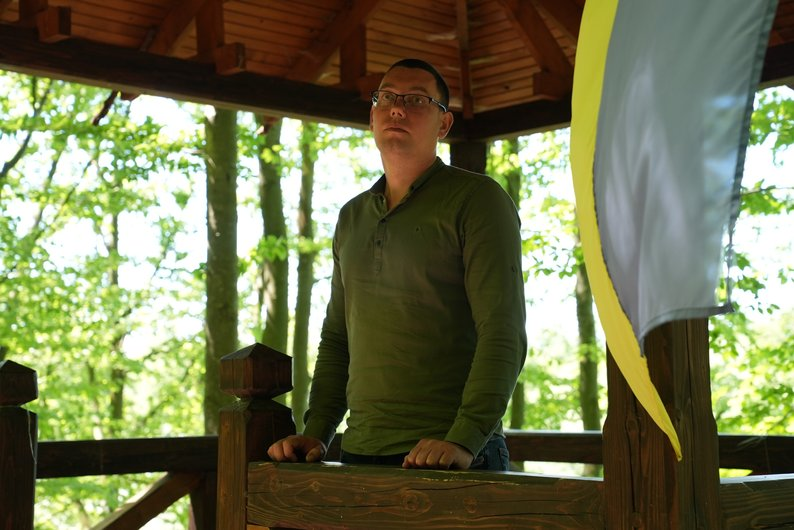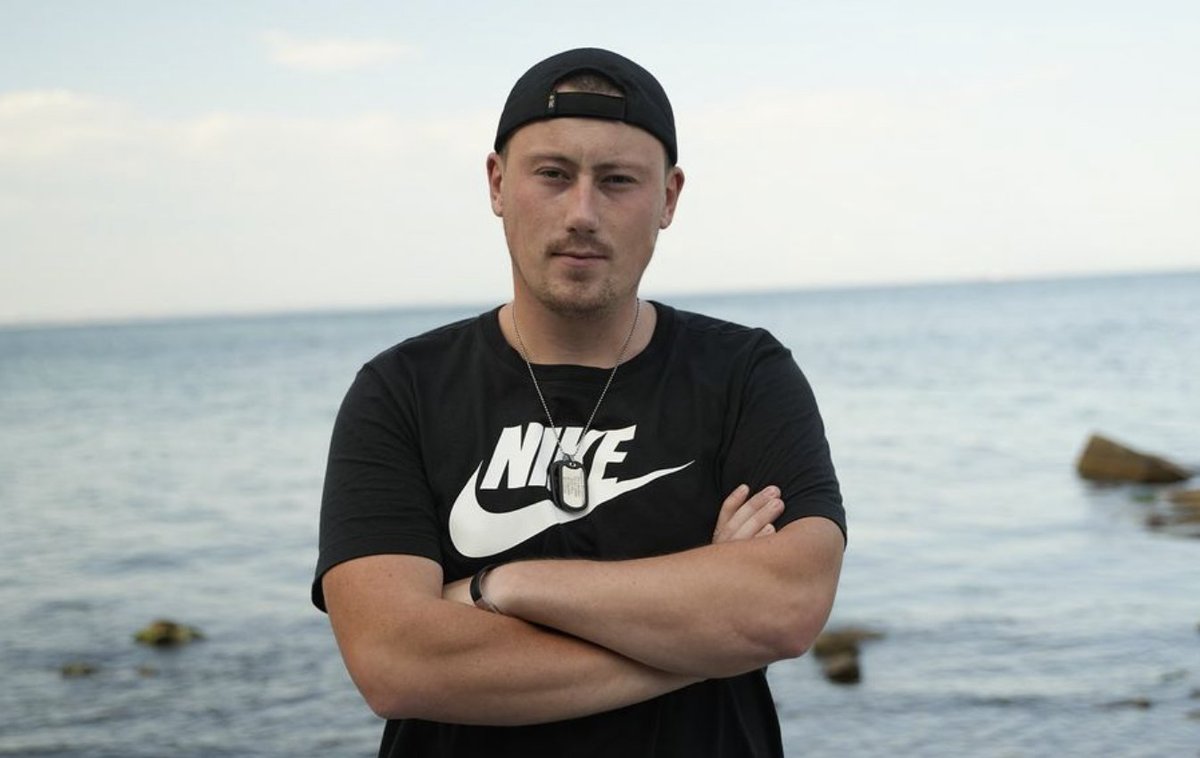PART 3 of the interview with gen. Kryvonos was made by Mark Solonin and translated by me.
Topic: battles for airfields around Kyiv. Defense of Zhyliany airport.
original video:
The full text is also available at @wartranslated: wartranslated.com/big-interview-…
Topic: battles for airfields around Kyiv. Defense of Zhyliany airport.
original video:
The full text is also available at @wartranslated: wartranslated.com/big-interview-…
Here is also a thread of different parts of the interview. I have added some information about Kryvonos' background and views, as there are many questions about those.
https://twitter.com/VolodyaTretyak/status/1553422810424524804?s=20&t=LMn0c8tRFqScdq68AzCK6A/1
Translation:
Interviewer(I): Right. Nevertheless, the enemy did not pass Bucha in a day, not in two, not in a week, not in a month. And in particular, as far as I understand, they did not manage to capture and use the landing craft for landing. /2
Interviewer(I): Right. Nevertheless, the enemy did not pass Bucha in a day, not in two, not in a week, not in a month. And in particular, as far as I understand, they did not manage to capture and use the landing craft for landing. /2
As far as I know that none of them has four airfields near Kyiv. That's the whole story with the airfields. I know you weren't just observing it; you were involved in it. How is it that the Russian command didn't succeed here? /3
Gen. Kryvonos (K): The one they took was the Hostomel airfield. Thank God, thanks to the reasonably quick reaction of the organization of work, on all the other airfields, the Russians were burned. /4
There was an attempt to land Russian paratroopers at Vasylkivsk airfield, but the planes were shot down. Some Russian paratroopers even managed to land from Il-76. There were about 20 people there, but they were surrounded and eliminated. /5
About 20 had time to land, to assemble, and then AFU destroyed them. It happened due to the precise right actions, who were in charge of the defense of those airports, those airfields. We did not allow the Russians to work out the operation. Do you know what the specifics are? /6
You, as a military historian, probably pay attention to that. I think you paid attention to it a long time ago.
The Russians often try out previously existing patterns of action of the Russian and Soviet armies. It just already imposes the nuances of modernity. /7
The Russians often try out previously existing patterns of action of the Russian and Soviet armies. It just already imposes the nuances of modernity. /7
So what the Russians did in the Kyiv direction very often reminds me of the actions of the Soviet Union and the Warsaw Pact countries in 1968 in the occupation of Czechoslovakia. The same. Airfields, robust tank columns, rapid advance. It worked there. It didn't work here. /8
Czechoslovakia, the Czech Republic, and Slovakia did not want to go into conflict. They didn't fight. And the Ukrainians, regardless of the country's political leadership position, were instantly self-organized, having already had enough experience. /9
And they started to burn Russian tanks wherever they could. Only afterward was it taken under the control of the military leadership and became more or less normally managed.
It was the case in Hostomel, but unfortunately, the Russians captured it afterward anyway. /10
It was the case in Hostomel, but unfortunately, the Russians captured it afterward anyway. /10
The units at the Hostomel airfield put up a decent resistance, although they were conscripts and support units. Nevertheless, they shot down more than one Russian helicopter. /11
And the Russians had planned first to land the landing party, launch the runway clearing, and suppress the Ukrainian air defense system. And then they wanted to land military transport aviation planes. /12
In principle, they were planning to do that, in Vasylkiv, in Gostomel airfield. They planned to build it up at Zhulyansk airfield Sviatoshyn Airfield afterward. The next target was the city of Boryspil (Kryvonos means the airport in Boryspil - remark). But this plan failed. /13
Interviewer
(I): About Hostomel. Just a private question. It is of little importance. /14
(I): About Hostomel. Just a private question. It is of little importance. /14
But I want to clarify that since you are aware of it, I still saw some footage of the landing on the Internet: A significant plane lands, a camera shooting placed on a soldier's helmet, and Russian paratroopers run out onto the runway. /15
Did they manage to land the aircraft in Gostomel, or was it only an attempt to land a large helicopter?
(K): In the beginning, it was an attempt to land a helicopter.
(I): They didn't manage to land a plane there. Is that correct? /16
(K): In the beginning, it was an attempt to land a helicopter.
(I): They didn't manage to land a plane there. Is that correct? /16
(K): I don't have that information, so I'm not going to fantasize. According to my knowledge, when I interviewed those who took part in the first 24 hours of fighting at the Gostomel airfield, they did not tell me about the landing of the Russian military transport aircraft. /17
(I): It's clear. Regarding the airfield Zhulyany, if I understand correctly, you are very well aware of events and who defended it in the first two or three days. Were Territorial Defense Forces (TDF) involved there? /18
The neighborhood men, the army, special forces, or air defense? What was there at Zhulyany?
(K): [Laughing] Zhulyany was a wild hodgepodge (a mixture, originally "solyanka" – remark), from different power structures of Ukraine. /19
(K): [Laughing] Zhulyany was a wild hodgepodge (a mixture, originally "solyanka" – remark), from different power structures of Ukraine. /19
And on the 25th, absolutely accidentally, well, conditionally, I accidentally stopped at Zhylyansk airfield; we had to get ammunition there to go to another area. I saw many border guards, officers, and soldiers of the National Guard present. /20
A few soldiers of the Armed Forces of Ukraine (AFU) were present.
When I asked, "what will we do? What were we waiting for?"
- "We are waiting for the Kirov landing party."
- "What are we doing?
- "We are not doing anything. We are waiting. "
- "Who is the man in charge?" /21
When I asked, "what will we do? What were we waiting for?"
- "We are waiting for the Kirov landing party."
- "What are we doing?
- "We are not doing anything. We are waiting. "
- "Who is the man in charge?" /21
- "No one in charge."
Understanding the importance of Zhulyany airport - It was the air gateway for the Russians, for the success of the takeover of Kyiv. There were people, but the task was not completely clear to them. /22
Understanding the importance of Zhulyany airport - It was the air gateway for the Russians, for the success of the takeover of Kyiv. There were people, but the task was not completely clear to them. /22
In general, these were not members of the AFU but other security forces. And they have another specificity. Now they are not even trained; they don't understand what to do. They gathered, and I introduced myself, "I'm general Kryvonos. I am taking the command". /23
Then I set some tasks. I had some experience in defense and successful experience in defense of airfields. In 2014 during the 47 days, I defended in Kramatorsk.
Additionally, I knew how to seize airfields because of the specifics of my service as a Special Forces soldier. /24
Additionally, I knew how to seize airfields because of the specifics of my service as a Special Forces soldier. /24
Accordingly, I also knew how to prevent capture. There were cadets from the military institutions of the Shevchenko University. There was a small unit of the presidential regiment. Again, even just an honor guard company. /25
You understand, these are just the guys who absolutely do not know how to fight. /26
But here, we have to give credit to both the commander of this combined unit and these guys; they did everything right; as I told them, they were quick to learn, as well as the border guards and the national guard. There was no TDF, unfortunately. /27
Another composite unit came to the airfield at my call, but they had nothing to do with TDF and armed forces then. They were veterans with experience from the previous war, 2014 through 2022. /28
And these guys were the guys who had served and fought in the Right Sector unit (Pravyi sector in Ukrainian – remark) at one time, then fought in the Third and Eighth Special Operations Regiment. So these guys also understood everything. /29
And they were my brothers-in-arms, who did everything very clearly and quickly.
The first airfield's defense task is to block the runway to prevent the landing. /30
The first airfield's defense task is to block the runway to prevent the landing. /30
Then it was mined, and as we created a system of fire and a system of engineering barriers, we were already absolutely at ease. What and how would we do next? We were only increasing our efforts, let's say, polishing the diamond we held in our hands. /31
(I): I get the creepy impression that if you went by car on February 25 to get ammunition in another place, the enemy could have taken Zhulyany airfield. And who is not aware, and it is within the city limits; it is not even a suburb of Kyiv. /32
The enemy could have occupied it immediately. Is it so?
(K): Well, not immediately, but let's say it could have been seized by an enemy airborne landing and secured landing by Russian Federation military transport aircraft. /33
(K): Well, not immediately, but let's say it could have been seized by an enemy airborne landing and secured landing by Russian Federation military transport aircraft. /33
And it would have been much harder to beat it out of there in the middle of the city.
(I): There are less than 10 kilometers from the airport to the president's office. /34
(I): There are less than 10 kilometers from the airport to the president's office. /34
(K): It is seven kilometers only in a straight line and within the city limits, where there weren't that many troops because all of them moved in the direction of Irpin. /35
The next thread will be about what happened at the end of march: How and why did the RU army leave Kyiv, Chernihiv, and Sumy provinces?
Please follow me so as not to miss the next translation :)
end /36
Please follow me so as not to miss the next translation :)
end /36
@OSINTEng @RALee85 @Blue_Sauron @Osinttechnical @TrentTelenko @DomNicholls @UAWeapons @TrueFactsStated @WarintheFuture @KofmanMichael @michaeldweiss @aravosis @JoshManning23 @general_ben @tomiahonen @ptoveri @ian_matveev @RolandOliphant @shashj /37
#war_in_ukraine #Ukrainians #UkraineRussiaWar #UkraineWillWin #ukraine #UkrainianArmy #UkrainianNews #UkraineWar #RussianArmy /38
• • •
Missing some Tweet in this thread? You can try to
force a refresh
















